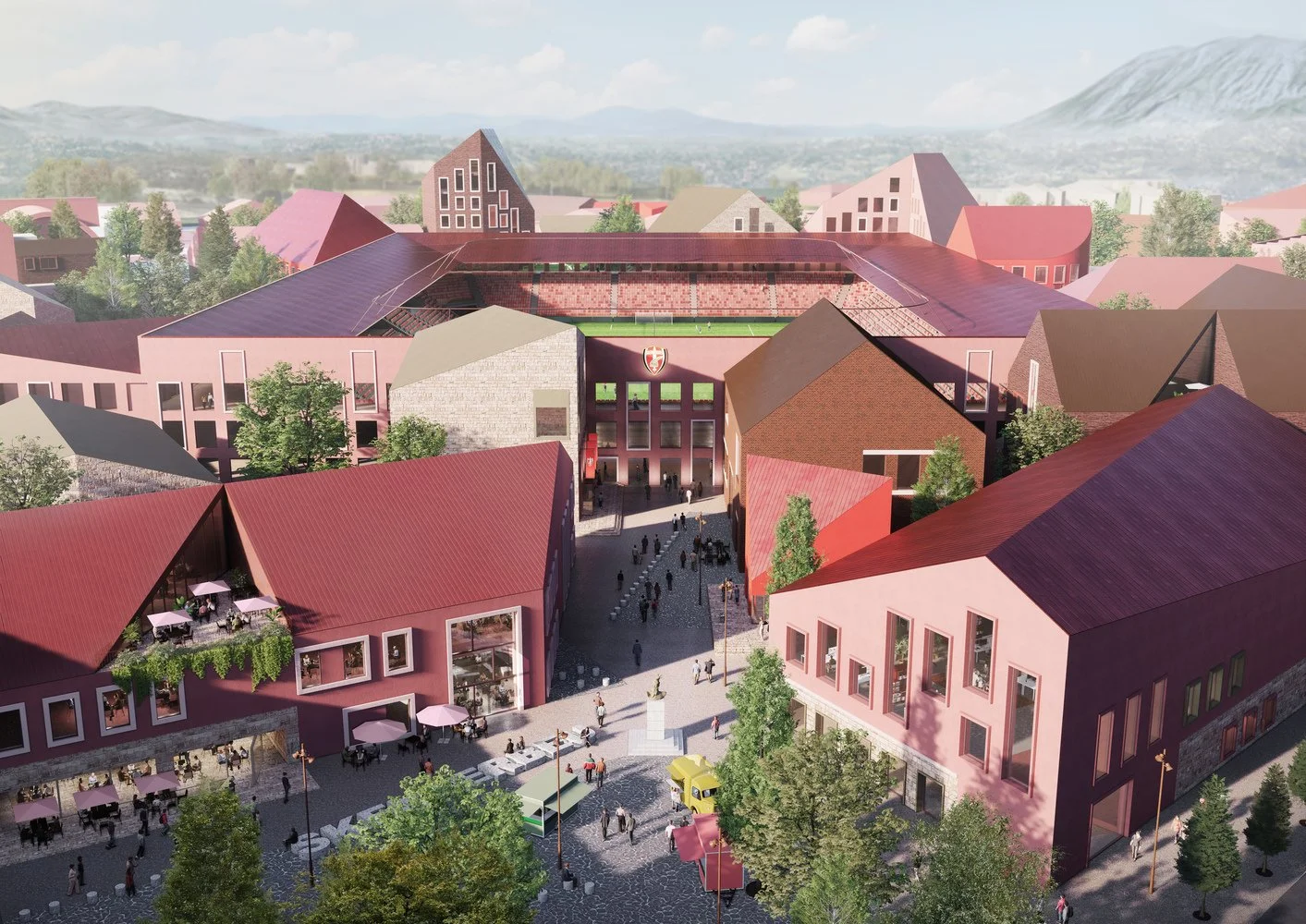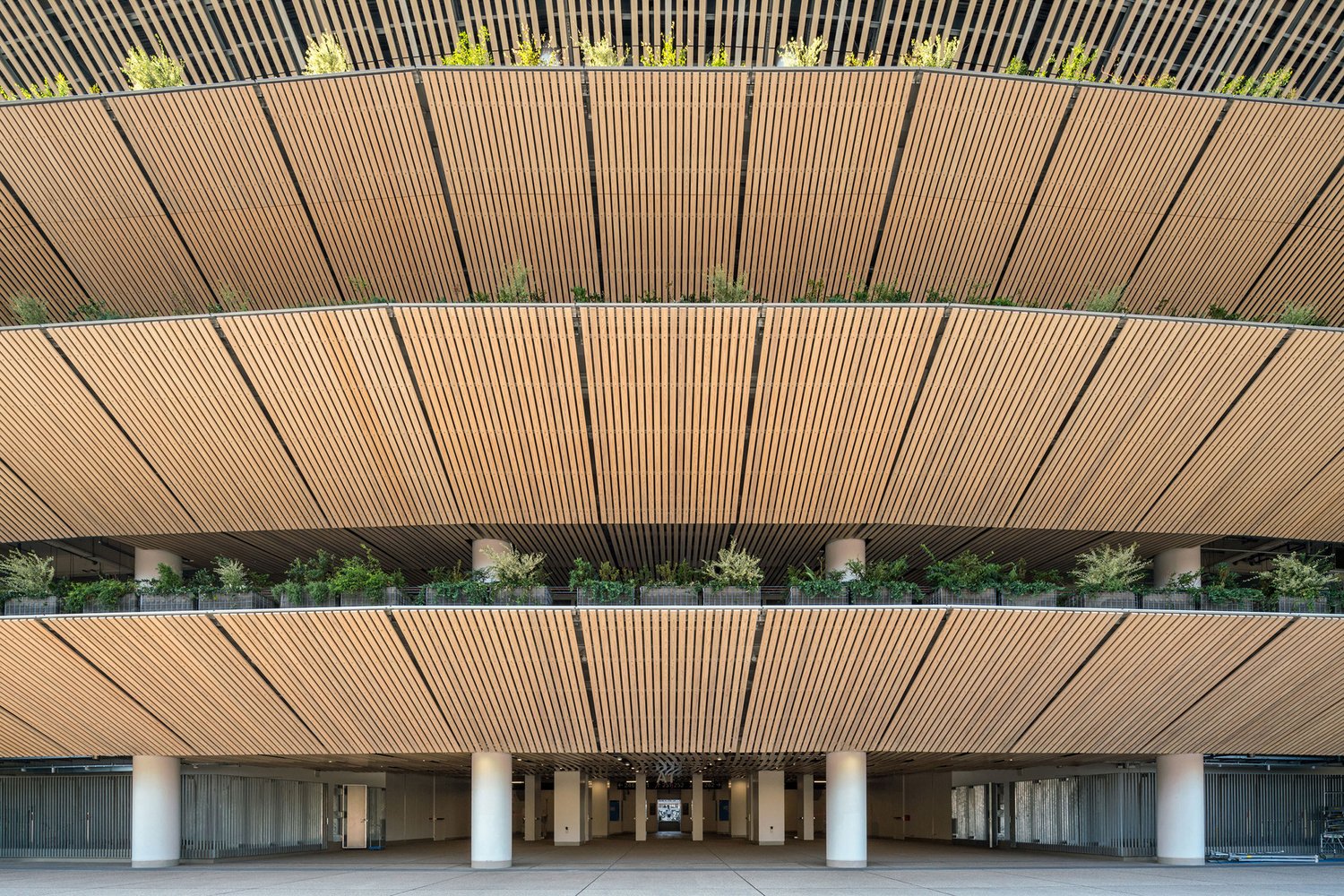
Regeneration
The fundamental principle of longevity in sports stadium sites should unlock opportunities for stadiums to be anchors which stimulate wider investment and growth in the local area.
Sports led developments present the opportunity to bring forward urban transformation extending the impact of the regeneration beyond the stadium to create city districts and communities. Increasingly stadium developments will sit at the heart of complementary urban development including sports academies and enterprise, community facilities, education, retail and entertainment, health and well-being and residential. This integrated approach can help to drive and fund stadium regeneration projects whilst amplifying the community benefits.
In Manchester, Trafford Council has approved the first stage of plans to regenerate a huge area encompassing Manchester United’s Old Trafford. The council has announced a draft masterplan to redevelop the Trafford Wharfside area, which neighbours MediaCity, over the next 15 years4. The masterplan places nature and landscape at the heart of its vision, celebrates the Manchester Ship Canal waterfront and the Imperial War Museum, creates opportunities for 5,000 new homes, and connects Trafford Wharfside to the city centre.
At the heart of the new regeneration will be a high-quality setting for Manchester United FC as the club develops its plans for a redevelopment of Old Trafford.
In a similar move, Luton Town FC has submitted plans for its Power Court Stadium, a new 19,500- seat stadium which will sit in the heart of the town centre. The new stadium will form the centrepiece of a 20-acre regeneration site adjacent to Luton Railway Station which already benefits from outline planning consent6. The scheme is at the forefront of the Borough’s wider regeneration plans and alongside the new stadium will deliver 1,200 homes, leisure, restaurants, bars, retail and community space.
Image: Power Stadium, Luton
The opportunity to use sports stadiums as anchors in a wider place-based regeneration is an exciting opportunity to design for a greater connection between stadium and place. Regeneration projects of the magnitude of Trafford Wharfside take time, with some elements coming forward as a priority and others dependent on longer-term site-wide strategies, funding mechanisms and partnerships. It is important that a project such as this establishes a vision which articulates the direction of travel over the coming 10 to 20 years but is intentionally flexible to be able to adapt with changing needs over time.
The character of a stadium-based regeneration project will vary with the scale of sites available. Larger sites have capacity for mixed-use communities that incorporate a blend of uses, such as commerce, community facilities, education, leisure and recreation. Smaller sites might be primarily residential in use. Irrespective of size, the aspiration should be to nurture a collegial environment around the stadium.
Image: Old Trafford, Manchester
New stadium developments should be conceived as integrated neighbourhoods that belong to and connect with their surrounding area, with streets, walkways and cycle routes designed to stitch into the wider movement network, increasing site
access and permeability. As such, the sites can invite wider footfall, which will enliven the new neighbourhoods, with the natural surveillance of activated streets and spaces helping residents feel safe and secure.
In the city of Korca, Albania, the design of the new Skenderbeu Stadium is located within a wider masterplan, with a vibrant new neighbourhood clustered around the stadium. The ambition of the project is to extend the city’s Parku Rinia public park and the built environment around the stadium to better connect the stadium with the city. The masterplan includes shops, restaurants, kindergartens, supermarkets, a swimming pool and smaller public football pitches. The design of the stadium and the surrounding neighbourhood responds to the historic architectural context of Korca with a mix of typologies that are rich in variation, unique shapes and irregular urban spaces7. The Prime Minister of Albania, Edi Rama, has explained that the wider ambition of the stadium project is to “create new models where the stadiums of our cities can also become engines of social and economic development.”
The US Bank Stadium in Minneapolis, an NFL stadium opened in 2016, has sparked more than $1 billion in redevelopment in the areas surrounding the new stadium. The location which once consisted of aging, underutilised commercial properties, has now been transformed into a vibrant ‘East Town’ neighbourhood with new housing, hotels, retail and office space9. 2020 research by the Real Estate Investment Network in the US found that homes in neighbourhoods such as East Town that are close to new stadium builds – or proposed stadium builds – on average have premiums between 3% and 15%.
In Sydney, Australia, the New South Wales Government is focused on using existing sporting infrastructure to drive sports innovation - for example, the launch of the Sydney Sports Incubator which will be based at the Sydney Olympic Park. The incubator, will nurture sports start-ups to develop, accelerate and commercialise their innovations, growing Australian expertise in sport.
The programme, will offer office space, a research laboratory, an entrepreneurial education programme and access to sporting organisations and athletes based at Sydney Olympic Park.
Image: Skenderbeu Stadium, Korca, Albania
The freehold of a sports stadium or the land on which the stadium sits can sometimes be owned by the local authority, with the local club then leasing the ground/land. As many local authorities struggle financially, the most appropriate financial relationship between club and council is a topic which may increasingly come up for review.
A current example is the ongoing negotiation between Nottingham Forest FC and Nottingham City Council, which owns the land that the club’s City Ground stadium sits on. The club currently pays £250,000 a year in rent with 37 years of the current agreement remaining and is aiming to renegotiate a longer agreement. However, the council is asking, as one option, for the annual rent to be almost quadrupled11. The club has said that unless there is “significant progress” in negotiations, then the club may have to look at relocating from the ground it has played at since 1898.
There is a growing need for professional sport to sit as a core pillar of an area’s local economic development plans as club and council work in partnership to ensure the area maximises the benefit of having a professional sports team.
In the UK, Sevenoaks District Council is in discussion with rugby union side Wasps, about building a multi-use stadium, training facilities and a hotel on the outskirts of Swanley. The stadium would provide a new home for Wasps and a spokesperson for the council said it would bring “unparalleled economic, sport development, health, education and skills benefits to the district.” The proposed site of the new Wasps ground, Pedham Place in Farningham, is being considered for a mixed-use development for up to 2,500 homes. The stadium would form part of a new settlement which would include education, employment, health and leisure facilities.
More from Sport+
Sport+ Nature
We look at some of the best global examples where nature has been used to embrace sports stadiums.
Sport+ Community
We spoke to Glen Sutton from Fulham FC to find out about the placemaking led approach to the re-development of their Riverside Stand at the historic Craven Cottage.
Sport+ Sustainability
The Johnan Cruijff ArenA in Amsterdam, home to Ajax FC, has pioneered an innovative new approach to generating energy within the stadium.







